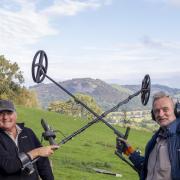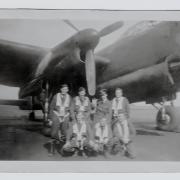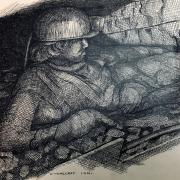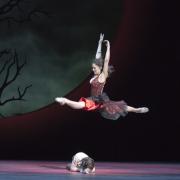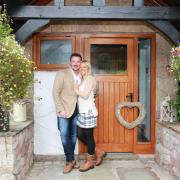A teenager is forging an unusual equine career, as Paul Mackenzie reports

Teenager Nick O’Sullivan is working with horses, as he wanted to since he was a little boy – forging a career in an age old industry.

The young farrier is now based in the UK’s equine capital Newmarket and has had a hand in the success of some of the world’s best racehorses. Nick, a former show jumper and three-day event rider, originally considered a life as a vet but could not face telling owners their animal would have to be put down.
‘I have loved this ever since my mum suggested it when I was 14,’ he said. The 18-year-old from Mold passed his forging certificate at Myerscough College in Preston and has now begun a four-and-a-half year apprenticeship at the O’Shaughnessy farriery where he is working with some of the world’s most valuable horses.
‘None of the horses are worth under £30,000 and the most expensive are probably worth over £10 million but you can’t think of the value, you just have to deal with the animal.
‘People from all over the world bring their horses to this country because there is such a tradition of farriery here. The basics haven’t changed for thousands of years and I don’t think they ever will.’
With almost as many types of shoe as there are horses, Nick has a lot to learn and he added: ‘Even the experienced people I’m doing my apprenticeship with say they don’t know it all yet. That’s the great thing about the job, there’s always more to learn and skills to develop.
‘At college I learned how to make shoes and the theory, but as an apprentice you’re working with horses every day. You have to be able to trim the horse’s foot, measure the horse’s foot, make a shoe and fit it. There are more than 1,000 types of shoe and every horse – just like every human – is different so they need something that’s right for them.’
A former pupil of the Hammond School in Chester, Nick began riding when he was 11 and rode with the Flint and Denbigh Pony Club and with the Flint and Denbigh Hunt. He was presented with scores of rosettes and awards and in 2011 was a winner at an international three-day event at Weston Park.
‘I tried every sport when I was young but none of them stuck with me the way horses did. I love the trust and the partnership that develops between a horse and a rider. None of my family was horsey, but I loved it from the start.’
Nick’s brother, Alex, is a former karting champion now studying accountancy, mum Allison is a lecturer and dad John a marketing man. John said: ‘None of us are at all practical in the way Nick is but even when he was very young he enjoyed playing with plasticine. He has always loved animals and had so many pets when he was younger. He’s in his element doing this.’
Shoeing a horse in five steps
1 Look at the horse. Seems obvious, but a good farrier will be able to learn a lot from a quick assessment of its gait, stance and temperament.
2 Look more closely. Pick up a foot and see what you have to work with – is it hard or brittle? Now trim the foot to remove excess horn.
3 Size it up. Farriery is a traditional craft and fancy modern inventions like the metric system are not for them. Measurements of feet are taken in inches.
4 Get fired up. Now make the shoe. Heat your metal then gradually knock it into shape and to the required size. The style of shoe will depend on the horse – a racehorse will need a different kind of shoe to a carthorse.
5 Go for a fitting. Grab your hammer and nails and help your horse try on their new shoe. Hopefully, after a satisfied look in the mirror, they should walk out happily and without a new limp.




